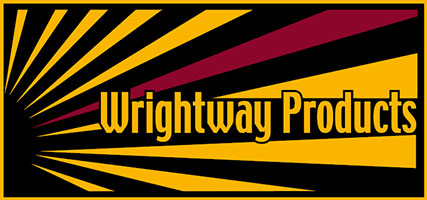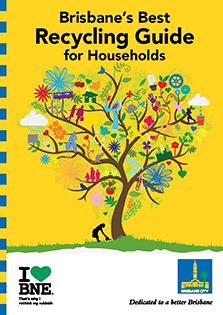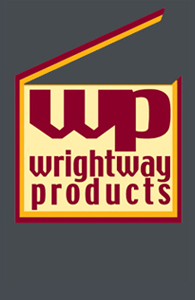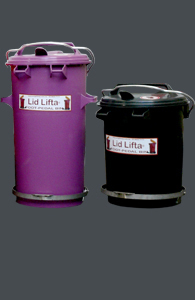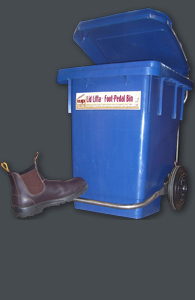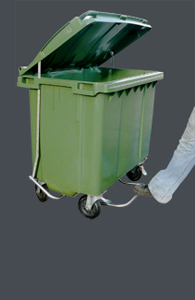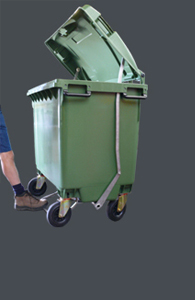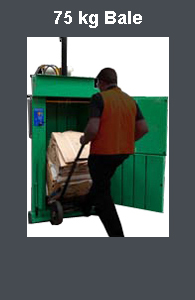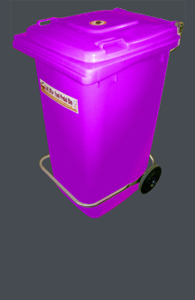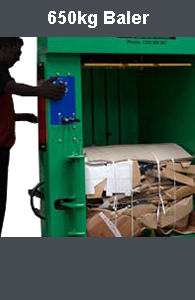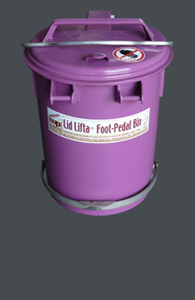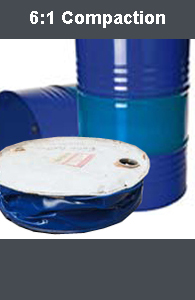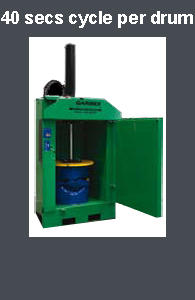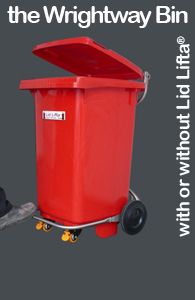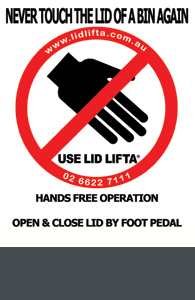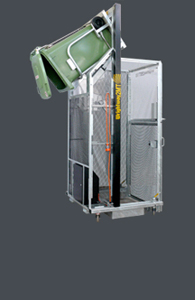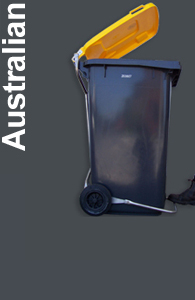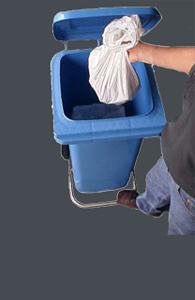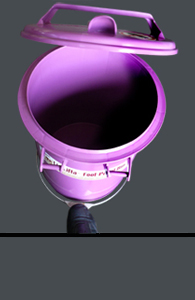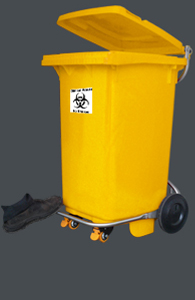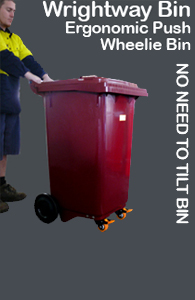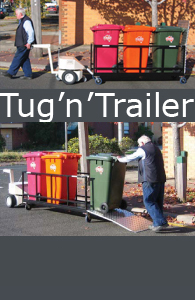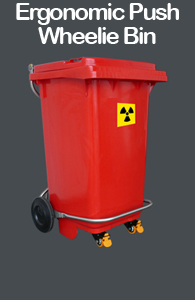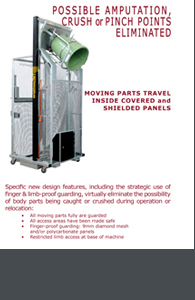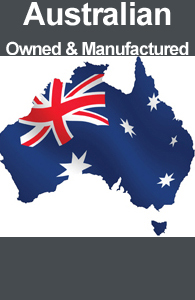The possibilities are almost beyond belief ... just like in a good old fashioned sci-fi movie ... but it's happening NOW!
The following article (images removed) was downloaded from the Pocket-Lint website by Wrightway Products on Tuesday 12th December 2017. https://www.pocket-lint.com/gadgets/news/130380-future-batteries-coming-soon-charge-in-seconds-last-months-and-power-over-the-air
Future batteries, coming soon: Charge in seconds, last months and power over the air
Max Langridge and Luke Edwards | 28 November 2017
While smartphones, smarthomes and even smart wearables are growing ever more advanced, they're still limited by power. The battery hasn't advanced in decades. But we're on the verge of a power revolution.
Big technology and car companies are all too aware of the limitations of lithium-ion batteries. While chips and operating systems are becoming more efficient to save power we're still only looking at a day or two of use on a smartphone before having to recharge. Thankfully, universities are getting involved.
While it may be some time before we get a week's life out of our phones, development is progressing well. We've collected all the best battery discoveries that could be with us soon, from over the air charging to super-fast 30-second re-charging. Hopefully you'll be seeing this tech in your gadgets soon.
Bioo plant charger
The Bioo is a plant pot that harnesses the power of photosynthesis to charge your device, be it a tablet or phone. This already exists and can be bought now.
Bioo offers two to three charges per day at 3.5V and 0.5A via a USB port that's cleverly disguised as a rock. The pot uses organic materials that react with the water and organic matter from the plant's photosynthesising. This creates a reaction that generates enough power to charge gadgets.
Gold nanowire batteries
Great minds over at the University of California Irvine have cracked nanowire batteries that can withstand plenty of recharging. The result could be future batteries that don't die.
Nanowires, a thousand times thinner than a human hair, pose a great possibility for future batteries. But they've always broken down when recharging. This discovery uses gold nanowires in a gel electrolyte to avoid that. In fact these batteries were tested recharging over 200,000 times in three months and showed no degradation at all.
Solid state lithium-ion
Solid state batteries traditionally offer stability but at the cost of electrolyte transmissions. A paper published by Toyota scientists writes about their tests of a solid state battery which uses sulfide superionic conductors. All this means a superior battery.
The result is a battery that can operate at super capacitor levels to completely charge or discharge in just seven minutes - making it ideal for cars. Since it's solid state that also means it's far more stable and safer than current batteries. The solid-state unit should also be able to work in as low as minus 30 degrees Celsius and up to one hundred.
The electrolyte materials still pose challenges so don't expect to see these in cars soon, but it's a step in the right direction towards safer, faster charging batteries.
Fuel cell for phones and drones
A new fuel cell has been developed that could mean phones only need to charge once a week and drones stay airborne for over an hour.
Scientists at Pohang University of Science and Technology in South Korea have, for the first time, combined porous stainless steel with thin-film electrolyte and electrodes of minimal heat capacity. The result is a battery that's more durable and longer lasting than lithium-ion.
Graphene car batteries
Graphene batteries are the future. One company has developed a new battery, called Grabat, that could offer electric cars a driving range of up to 500 miles on a charge.
Graphenano, the company behind the development, says the batteries can be charged to full in just a few minutes. It can charge and discharge 33 times faster than lithium ion. Discharge is also crucial for things like cars that want vast amounts of power in order to pull away quickly.
The capacity of the 2.3V Grabat is huge with around 1000 Wh/kg which compares to lithium ion's current 180 Wh/kg. The best part of all this is that these batteries should be ready to go by mid way through 2016.
Laser-made microsupercapacitors
Scientists at Rice University have made a breakthrough in microsupercapacitors. Currently they are expensive to make but using lasers that could soon change.
By using lasers to burn electrode patterns into sheets of plastic manufacturing costs and effort drop massively. The result is a battery that can charge 50 times faster than current batteries and discharge even slower than current supercapacitors. They're even tough, able to work after being bent over 10,000 times in testing.
Sodium-ion batteries
Sodium-ion batteries, that use salt, have been used in laptops following the creation of a prototype by the French network of researchers and industrial firms called RS2E.
This battery uses a standard that means it can be placed in laptops and even work in electric cars like the Tesla Model S.
The exact method of build and how it works are being kept secret but the 6.5cm battery can manage 90 watt-hours per kilogram, making it comparable to lithium-ion but with a 2000 cycle lifespan, which should be improved.
Foam batteries
Prieto believes the future of batteries is 3D. The company has managed to crack this with its battery that uses a copper foam substrate.
This means these batteries will not only be safer, thanks to no flammable electrolyte, but they will also offer longer life, faster charging, five times higher density, be cheaper to make and be smaller than current offerings.
Prieto aims to place its batteries into small items first, like wearables. But it says the batteries can be upscaled so we could see them in phones and maybe even cars in the future.
Solid-state batteries
Scientists at MIT, working with Samsung, have discovered solid-state batteries that are better than current lithium-ion efforts. These batteries should be safer, last longer and offer more power.
Current lithium-ion batteries rely on an electrolyte liquid to transport charged particles between the two electrodes. It's this liquid that can be flammable and which degrades the battery, limiting life.
According to the MIT report these new batteries could be charged for hundreds of thousands of cycles before degrading. They could also provide a 20 to 30 per cent improvement in power density meaning that much more charge for whatever they are powering. And they aren't flammable so they're ideal for electric cars.
Nano 'yolk' triple capacity and charge in six minutes
Scientists at MIT have created a battery that triples the capacity of current offerings and can charge to full in just 6-minutes. It also does not degrade rapidly over time meaning it should last a long while.
The icing on the cake here is that production is inexpensive and easy to scale, so we could see the batteries appear soon.
Aluminium graphite charges to full in one minute
Scientists at Stanford University have developed an aluminium graphite battery that could replenish a smartphone's battery to full in just a minute.
The only issue is they hold about half the power of a current lithium battery, but with charging to full in just a minute that shouldn't be too much of a problem.
Flexible battery
A team at Arizona State University have come up with a flexible battery using the ancient Japanese art of Kirigami.
The result means smartwatches could use a flexible strap battery for longer life and smaller build. Looking a little further forward it'll be ideal for weaving power into smart clothes that monitor our health.
Skin power
Using the power of friction a device has been created that can harness electricity from a person's skin. The result is enough power, from a finger tap on skin, to power 12 LED bulbs. The future could mean there will be no need for batteries in wearables or smart clothes.
So how does it work? An electrode is used to harvest the current, so a 50nm-thick gold film is used. The gold film sits below a silicone rubber layer composed of thousands of tiny pillars that help create more surface area for skin contact, which creates more friction. Since the skin is one of the triboelectric layers it means the device can be small.
Scientists have already shown off a wearable powered by the device. Next gadgets to use it? Hopefully everything.
Lumopack charges an iPhone 6's battery in 6-minutes
The Lumopack is a portable battery that's all about fast charging. The battery can fill up in just 6 minutes with enough power to fully charge an iPhone 6.
The Lumopack, from Lyte Systems, can be fully charged in just 30-minutes, thanks to its charge rate of 140W, double that of the nearest competitor.
Foldable battery is paper-like but tough
The Jenax J.Flex battery has been developed to make bendable gadgets possible. The paper-like battery can fold and is waterproof meaning it can be integrated into clothing and wearables.
The battery has already been created and has even been safety tested, including being folded over 200,000 times without losing performance.
uBeam over the air charging
uBeam uses ultrasound to transmit electricity. Power is turned into sound waves which are transmitted and then converted back to power on reaching the device.
The uBeam concept was stumbled upon by 25-year-old astrobiology graduate Meredith Perry. She started the company that will make it possible to charge gadgets over the air using a 5mm thick plate. These transmitters can be attached to walls, or made into decorative art, to beam power to smartphones and laptops. The gadgets just need a thin receiver in order to receive the charge.
Water dew powered batteries
This one is still in the early stages but MIT scientists have found a way to harvest power from water dew (as pictured at the top of the page).
The device uses interleaved flat metal plates to produce power from water dew in the air. Initial tests have produced small amounts of power, at 15 picowatts, or trillionths of a watt. But this can be tuned easily, says Nenad Milijkovic heading the project, to produce at least 1 microwatt.
While this small amount of power isn’t going to replace your charger, or keep it powered all day, it will be useful in more remote locations where no other power source is available and time isn't too much of an issue. A charger the size of a coolbox lid should be able to fully charge a phone in 12 hours.
StoreDot charges mobiles in 30 seconds
The StoreDot charger works with current smartphones and has been developed by StoreDot, a start-up born from the nanotechnology department at Tel Aviv University.
The StoreDot uses biological semiconductors made from naturally occurring organic compounds known as peptides – short chains of amino acids - which are the building blocks of proteins. The result is a charger that can recharge gadgets in mere seconds.
The company also plans to release a charger capable of replenishing an electric car to full in just three minutes.
StoreDot will cost about £20 to make and should arrive in 2017.
Transparent solar charger
Alcatel has demoed a mobile phone with a transparent solar panel over the screen that would let users charge their phone by simply placing it in the sun.
Although it's not likely to be commercially available for some time, the company hopes that it will go some way to solving the daily issues of never having enough battery power. The phone will work with direct sunlight as well as standard lights, in the same way regular solar panels.
Aluminium-air battery gives 1,100 mile drive on a charge
A car has managed to drive 1,100 miles on a single battery charge. The secret to this super range is a type of battery technology called aluminium-air that uses oxygen from the air to fill its cathode. This makes it far lighter than liquid filled lithium-ion batteries to give car a far greater range.
Urine powered batteries
The Bill Gates Foundation is funding further research by Bristol Robotic Laboratory who discovered batteries that can be powered by urine. It’s efficient enough to charge a smartphone which the scientists have already shown off. But how does it work?
Using a Microbial Fuel Cell, micro-organisms take the urine, break it down and output electricity.
Sound powered
Researchers in the UK have built a phone that is able to charge using ambient sound in the atmosphere around it.
The smartphone was built using a principle called the piezoelectric effect. Nanogenerators were created that harvest ambient noise and convert it into electric current.
The nanorods even respond to the human voice, meaning chatty mobile users could actually power their own phone while they talk.
Twenty times faster charge, Ryden dual carbon battery
Power Japan Plus has already announced this new battery technology called Ryden dual carbon. Not only will it last longer and charge faster than lithium but it can be made using the same factories where lithium batteries are built.
The batteries use carbon materials which mean they are more sustainable and environmentally friendly than current alternatives. It also means the batteries will charge twenty times faster than lithium ion. They will also be more durable, with the ability to last up to 3,000 charge cycles, plus they are safer with lower chance of fire or explosion.
Sand battery gives three times more battery life
This alternative type of lithium-ion battery uses sand to achieve three times better performance than current batteries.
The battery is still lithium-ion like the one found in your smartphone, but it uses sand instead of graphite in the anodes. This means it not only offers three times better performance, but it's also low cost, non toxic and environmentally friendly.
Now for the sciencey bit. Scientists,at the University of California Riverside have been focused on nano silicon for a while, but it's been degrading too quickly and is tough to produce in large quantities. By using sand it can be purified, powdered then ground with salt and magnesium before being heated to remove oxygen resulting in pure silicon. This is porous and three-dimensional which helps in performance and, potentially, the life-span of the batteries.
Sodium-ion batteries
Scientists in Japan are working on new types of batteries that don't need lithium like your smartphone battery. These new batteries will use sodium, one of the most common materials on the planet rather than rare lithium – and they'll be up to seven times more efficient than conventional batteries.
Research into sodium-ion batteries has been going on since the eighties in an attempt to find a cheaper alternative to lithium. By using salt, the sixth most common element on the planet, batteries can be made much cheaper. Commercialising the batteries is expected to begin for smartphones, cars and more in the next five to 10 years.
Upp hydrogen fuel cell charger
The Upp hydrogen fuel cell portable charger is available now. It uses hydrogen to power your phone keeping you off the gird and remaining environmentally friendly.
One hydrogen cell will provide five full charges of a mobile phone (25Wh capacity per cell). And the only by-product produced is water vapour. A USB type A socket means it will charge most USB devices with a 5V, 5W, 1000mA output.
NTU fast charging battery
Scientists at Nanyang Technology University have created a battery that fast charges to 70 per cent in 2 minutes and has a life 10 times longer than current lithium-ion batteries.
The NTU battery should last for 10,000 charges, and according to its creators is best suited for use in electric cars.
Nanobatteries
Nanobatteries are 80,000 times smaller than a human hair and can offer three times the capacity of current efforts while charging in just 12 minutes and working for thousands of cycles.
The nanobattery breakthrough was made by creating tiny "nanopores" that act like lots of little batteries which, in a honeycomb structure, make a full battery.
The research was published by scientists at the university of Maryland who said: "We were blown away by the performance." They attributed the enhanced performance to the short distances the electricity needs to travel, making the batteries far more efficient.
Batteries with built-in fire extinguisher
It's not uncommon for lithium-ion batteries to overheat, catch on fire and possibly even explode. The battery in the Samsung Galaxy Note 7 is a prime example. Researchers at Stanford university have come up with lithium-ion batteries with built-in fire extinguishers.
The battery has a component called triphenyl phosphate, which is commonly used as a flame retardant in electronics, added to the plastic fibres to help keep the positive and negative electrodes apart. If the battery's temperature rises above 150 degrees C, the plastic fibres melt and the triphenyl phosphate chemical is released. Research shows this new method can stop batteries from catching fire in 0.4 seconds.
Batteries that are safe from explosion
Lithium-ion batteries have a rather volatile liquid electrolyte porous material layer sandwiched between the anode and cathode layers. Mike Zimmerman, a researcher at Tufts University in Massachusetts, has developed a battery that has double the capacity of lithium-ion ones, but without the inherent dangers.
Zimmerman's battery is incredibly thin, being slightly thicker than two credit cards, and swaps out the electrolyte liquid with a plastic film that has similar properties. It can withstand being pierced, shredded, and can be exposed to heat as it's not flammable. There's still a lot of research to be done before the technology could make it to market, but it's good to know safer options are out there.
Liquid Flow batteries
Harvard scientists have developed a battery that stores its energy in organic molecules dissolved in neutral pH water. The researchers say this new method will let the Flow battery last an exceptionally long time compared to the current lithium-ion batteries.
It's unlikely we'll see the technology in smartphones and the like, as the liquid solution associated with Flow batteries is stored in large tanks, the larger the better. It's thought they could be an ideal way to store energy created by renewable energy solutions such as wind and solar.
However, IBM and ETH Zurich beg to differ, and have developed a much smaller liquid flow battery that could potentially be used in mobile devices. This new battery claims to be able to not only supply power to components, but cool them at the same time. The two companies have discovered two liquids that are up to the task, and will be used in a system that can produce 1.4 Watts of power per square cm, with 1 Watt of power reserved for powering the battery.
Zap&Go Carbon-ion battery
Oxford-based company ZapGo has developed and produced the first carbon-ion battery that's ready for consumer use now. A carbon-ion battery combines the superfast charging capabilities of a supercapacitor, with the performance of a Lithium-ion battery, all while being completely recyclable.
The company has a powerbank charger that be fully charged in five minutes, and will then charge a smartphone up to full in two hours.
Zinc-air batteries
Scientists at Sydney University believe they've come up with a way of manufacturing zinc-air batteries for much cheaper than current methods. Zinc-air batteries can be considered superior to lithium-ion, because they don't catch fire. The only problem is they rely on expensive components to work.
Sydney Uni has managed to create a zinc-air battery without the need for the expensive components, but rather some cheaper alternatives. Safer, cheaper batteries could be on their way!
Smart clothing
Researchers at the University of Surrey are developing a way of you being able to use your clothing as a source of power. The battery is called a Triboelectric Nanogenerators (TENGs), which converts movement into stored energy. The stored electricity can then be used to power mobile phones or devices such as Fitbit fitness trackers.
The technology could be applied to more than just clothing too, it could be integrated into the pavement, so when people constantly walk over it, it can store electricity which can then be used to power streelamps, or in a car's tyre so it can power a car.
Stretchable batteries
Engineers at the University of California in San Diego have developed astretchable biofuel cell that can generate electricity from sweat. The energy generated is said to be enough to power LEDs and Bluetooth radios, meaning it could one day power wearable devices like smartwatches and fitness trackers.
Samsung's graphene battery
Samsung has managed to develop "graphene balls" that are capable of boosting the capacity of its current lithium-ion batteries by 45 per cent, and and recharging five times faster than current batteries. To put that into context, Samsung says its new graphene-based battery can be recharged fully in 12 minutes, compared to roughly an hour for the current unit.
Samsung also says it has uses beyond smartphones, saying it could be used for electric vehicles as it can withstand temperatures up to 60 degrees Celsius.
